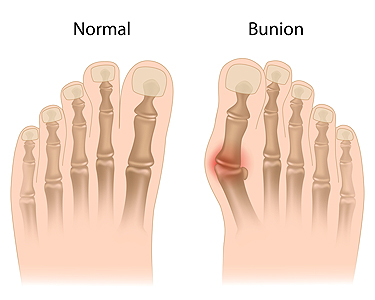
A bunion is most commonly recognized as the bony bump that forms at the base of the big toe, but it may go by different names, depending on its location or severity. The medical term for a traditional bunion is hallux valgus, which refers to the sideways deviation of the big toe. When a similar bump forms at the base of the little toe, it is often called a bunionette or tailor’s bunion. These changes in terminology reflect differences in position, underlying cause, or the particular joint affected. Regardless of the name, bunions are usually caused by inherited foot structure, poor footwear, or conditions like arthritis. They can lead to pain, stiffness, and difficulty with shoes. Early treatment can reduce symptoms and slow progression. If you have a visible bump near your toe joint or discomfort when walking, it is suggested you see a podiatrist for proper evaluation and options.
If you are suffering from bunion pain, contact Donovan Gowdie, DPM of The Foot & Ankle Treatment Center. Our doctor can provide the care you need to keep you pain-free and on your feet.
What Is a Bunion?
Bunions are painful bony bumps that usually develop on the inside of the foot at the joint of the big toe. As the deformity increases over time, it may become painful to walk and wear shoes. Women are more likely to exacerbate existing bunions since they often wear tight, narrow shoes that shift their toes together. Bunion pain can be relieved by wearing wider shoes with enough room for the toes.
Causes
- Genetics – some people inherit feet that are more prone to bunion development
- Inflammatory Conditions - rheumatoid arthritis and polio may cause bunion development
Symptoms
- Redness and inflammation
- Pain and tenderness
- Callus or corns on the bump
- Restricted motion in the big toe
In order to diagnose your bunion, your podiatrist may ask about your medical history, symptoms, and general health. Your doctor might also order an x-ray to take a closer look at your feet. Nonsurgical treatment options include orthotics, padding, icing, changes in footwear, and medication. If nonsurgical treatments don’t alleviate your bunion pain, surgery may be necessary.
If you have any questions, please feel free to contact our office located in Watkinsville, GA . We offer the newest diagnostic and treatment technologies for all your foot care needs.
